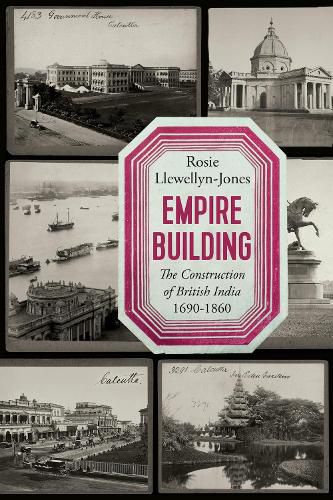Readings Newsletter
Become a Readings Member to make your shopping experience even easier.
Sign in or sign up for free!
You’re not far away from qualifying for FREE standard shipping within Australia
You’ve qualified for FREE standard shipping within Australia
The cart is loading…






‘Empire Building’ is a new account of the East India Company’s impact on India, focussing on how it changed the sub-continent’s built environment in the context of defence, urbanisation, and infrastructural development.
Rosie Llewellyn-Jones examines these initiatives through a lens of ‘political building’ (using Indian contractors and labourers). Railways, docks, municipal buildings, freemasons’ lodges, hotels, race-courses, barracks, cemeteries, statues, canals–everything the British erected made a political statement, even if unconsciously; hence this book is concerned less with architectural styles, more with subtle infiltration into the minds of those who saw and used these structures. It assesses, in turn, Indian responses to the changing landscape. Indians often reacted favourably to new manufacturing technologies from Britain, like minting and gunpowder, while the British learnt from and adapted local methods.
From military engineers and cartography to imported raw metals and steam power, Llewellyn-Jones considers the social and environmental changes wrought by colonialism. This period was marked by a shift from formerly private, Indian-controlled functions, like education, entertainment, trading and healing, to British public institutions like universities, theatres, chambers of commerce and hospitals.
$9.00 standard shipping within Australia
FREE standard shipping within Australia for orders over $100.00
Express & International shipping calculated at checkout
‘Empire Building’ is a new account of the East India Company’s impact on India, focussing on how it changed the sub-continent’s built environment in the context of defence, urbanisation, and infrastructural development.
Rosie Llewellyn-Jones examines these initiatives through a lens of ‘political building’ (using Indian contractors and labourers). Railways, docks, municipal buildings, freemasons’ lodges, hotels, race-courses, barracks, cemeteries, statues, canals–everything the British erected made a political statement, even if unconsciously; hence this book is concerned less with architectural styles, more with subtle infiltration into the minds of those who saw and used these structures. It assesses, in turn, Indian responses to the changing landscape. Indians often reacted favourably to new manufacturing technologies from Britain, like minting and gunpowder, while the British learnt from and adapted local methods.
From military engineers and cartography to imported raw metals and steam power, Llewellyn-Jones considers the social and environmental changes wrought by colonialism. This period was marked by a shift from formerly private, Indian-controlled functions, like education, entertainment, trading and healing, to British public institutions like universities, theatres, chambers of commerce and hospitals.